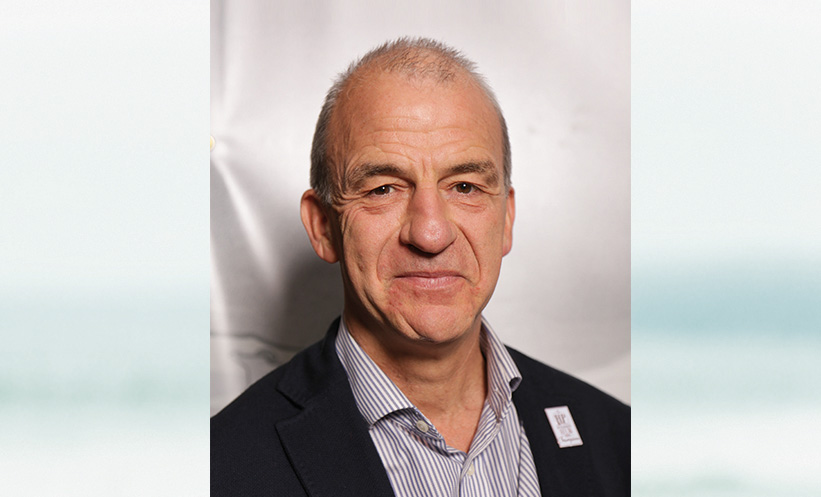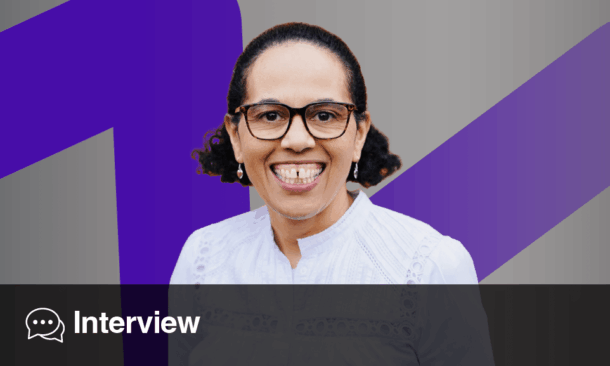Mike Elliott, VP Medical Affairs, Europe, Middle East & Australasia, Gilead Sciences
![]()
Interviewed by Kirstie Turner | Editorial Administrator, European Medical Group
![]()
Mike Elliott is the Vice President of Medical Affairs for Europe, Middle East & Australasia for Gilead Sciences. For International Non-Alcoholic Steatohepatitis (NASH) Day, we spoke to Mike about Gilead’s approach to tackling NASH and future diagnosis options, along with the role of medical affairs (MA) and his personal experiences and impressive career.
Q: You have an impressive career in the industry. Could you tell us what your proudest achievements are?
A: I’ve been in MA for >26 years, and the great thing about MA is that you sit between R&D, the exploration of new targets and drugs, and getting those drugs to market. You can see all the work that is involved in evaluating the science; talking to internal and external scientists, regulators, and payers; and then finally seeing patients respond and the value the medication brings. So, my proudest achievements would be the medicines I have helped bring to the market. I am a very small cog in a big machine: medicines for HIV, hepatitis, and in previous companies for respiratory viruses and flu, as well as working on vaccines. I’ve been in a great place to be part of those achievements, bringing medicines through development and to patients. I’m also very proud to have led and been a part of some great teams; you get to meet a lot of people in the industry who are highly qualified, dedicated, and hard-working. It is an honour to work with them and to be a leader in those teams and share their achievements.
Q: What are some of the challenges you faced and overcame in reaching these successes?
A: I’d reflect on the challenge that is the misperception of the pharma industry. I think the general public don’t know much about the industry; they don’t stop to think about how important it is to them, their relatives, and their loved ones – they tend to focus on other topics. I’m not saying we shouldn’t be held to a very high standard because we are dealing with human health, regulations, government, and funding, and it is important to everybody. We’ve got high expectations of ourselves, and the community should hold us to that expectation. However, I do feel the full range of what we do is not understood. Another challenge is how long drug development takes. You absolutely have to gather the right data, particularly safety data. The frustrating time is from Phase II, when you know that 90 percent of the time you have an asset, to the time when you make it available. All companies and academia are working to make the process faster and it’s a challenge that everyone will face together.
Q: Gilead recently announced a novel partnership with the data-driven drug discovery company insitro. Could you describe this collaboration and the advancements you hope to make in tackling the complex disease NASH?
A: NASH is a really complicated multifactorial disease, which we are only just understanding. It has a significant impact on patients worldwide and costs our health systems a lot of money. The disease and its impact are complicated; because of its multifactorial nature, hitting a single drug target won’t work well enough to make a big difference, and traditional paths of drug development could be unsuccessful. Gilead have embarked quite substantially into the area of NASH; our early major studies, STELLAR-3 and STELLAR-4, didn’t have positive results. Now we are looking at multiple other options, some traditional: targeting multiple pathways to see if that will make a difference rather than going on one target.
The collaboration with insitro has taken a completely new approach to NASH. Their specialty is modelling of disease, but they are also looking at potential candidate targets and patient responses. This is done in a machine learning environment, using what we have now – great advances in technology, data manipulation, and data storage – but also looking at how we handle data and how we use it to predict outcomes in a computer rather than in large clinical trials. If successful, it may predict the right targets and molecules. Then we will take up to five targets forward into development, and, if those are successful, into human clinical studies. It is a different approach and we are excited about it. We’ve been active in external partnerships and looking for novel approaches – this is a great example of that.
Q: How important will non-invasive testing be to successfully diagnose NASH patients in the future?
A: I think it is critical because the standard liver biopsy diagnosis is an invasive procedure. Written down on paper, it doesn’t sound too bad, but it involves inserting a fairly large needle into the liver, so there are risks and there is certainly discomfort for the patient. It also only tests a small piece of the liver, which might not be representative. Replacing that with a scan or a blood test that has a similar quality of evaluating the liver’s health is great. We now have a number of such tests which have been proven: the Fibrosis-4 (FIB-4) Index, the enhanced liver fibrosis (ELF) panel, and fibroscan. All of those have been shown to be very accurate and match the liver biopsy well. Even though our early major studies failed, we hope that the data they generated will allow anyone managing liver disease to move away from biopsy and onto a test such as a scan or blood test; these non-invasive tests will allow patients to be screened and treated much more safely.
Q: MA play an important role in medical education throughout all product lifecycle phases. What challenges have you and your team faced moving from the traditional single-customer engagement model to one with many interconnected stakeholders?
A: The world is moving fast in MA. The core is scientific engagement and exchange, with a focus on the external world. We understand what we have in our pipeline and marketed portfolio, and it is our role to communicate that in a balanced way. In the old model, one medical person would visit a doctor, and then visit another doctor or group of doctors. Now with digital technology, you’re spoilt for choice, which actually makes it a lot harder because you have to choose an effective way in which HCPs can interact and learn from data, as well as view it as good quality. Here, we are in the early stages. So far, we have had great success with educational podcasts, where two doctors discuss specific topics of interest in HIV; it is all very balanced and scientific. We have around 15 of these 10-minute podcasts. This format seems to be working well for people to listen to while walking or driving. It is a great package of what we call ‘nano learning’: a snapshot of one topic rather than having to access a journal online or go to a meeting. We are starting to experiment with ways of better engaging with HCPs; it’s a two-way conversation about the science and getting their feedback, which is important.
Q: How does MA in Europe differ from other parts of the world? Is Europe ahead of the game or are there certain areas in which we need to catch up with our global counterparts?
A: I have to say we are ahead of the game because that’s where my background lies and where I’m currently sitting, but I’ll put my positive biases aside. The great thing about working in Europe truly is the diversity that stretches and challenges you to make sure you are really communicating appropriately in whichever country or group of counties you are talking to. That means you must really evaluate the data yourself and make sure you understand it. I think this exists in other multiregional markets, such as Asia. This gives us the opportunity to constantly improve ourselves as we are challenged by the differences in our external environments. Having said that, along with other companies, we always keep really connected across global MA, both internally at Gilead and externally, via industry events by sharing best practice, looking for new ideas, and never being comfortable with thinking we are doing things perfectly; we always look for better ways, even with limited resources and plenty of tasks on the plate.
Q: Gilead’s core values are integrity, inclusion, teamwork, accountability, and excellence. Could you share how your experiences and personal attributes allow you to incorporate these values into your everyday work?
A: I like Gilead’s values and they are something we reflect on day-to-day. I think integrity is critically important; we are a regulated industry, expectations are high. Not only are we dealing with scientific evidence and data, we are also dealing with human health, so integrity has to be the foundation. We added inclusion as a new value around 2 years ago. Now it seems obvious, but by adding it as a key value it means that we work hard on it and think about it every day. It includes diversity of our employee base, ideas, thinking, and inclusion. The next three (teamwork, accountability, and excellence) are about the dynamics of how the team works. The concept of a hierarchical team with a talented leader is changing. We think a lot about adaptive leadership, and teams working together to bring out the best ideas and deliver those into our mission. That’s where the accountability comes in: having a clear focus on our vision. We are still a small company with a lot to do and without these values we couldn’t progress with our mission.








